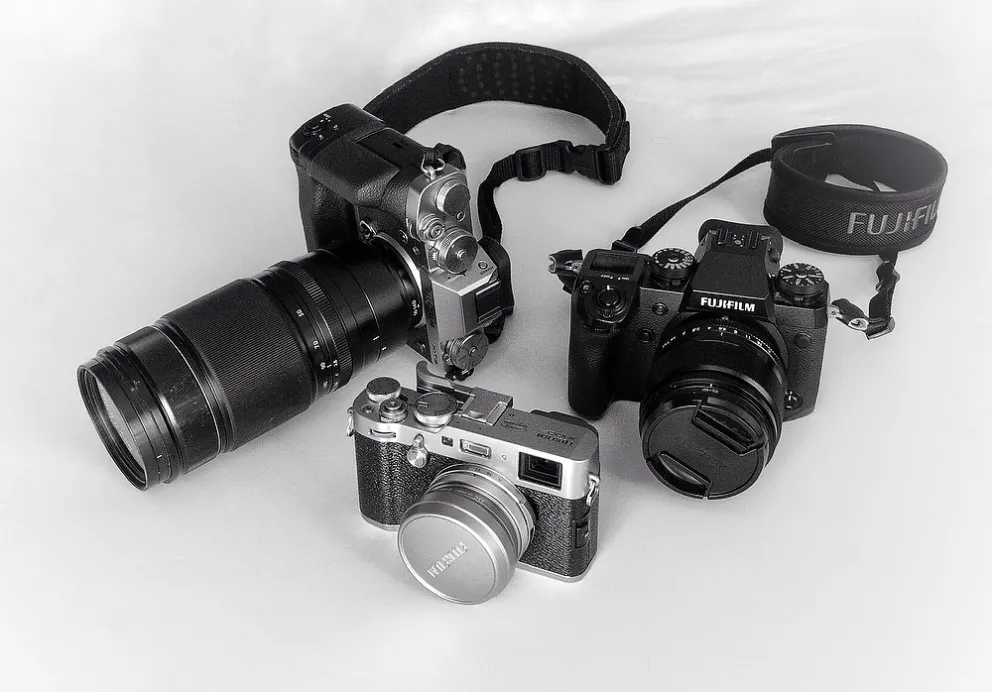
(photos and text by August Jennewein, University of Missouri-St. Louis) This is the fourth in a series of articles on mirrorless cameras in the wake of the Nikon/Canon mirrorless launches. (part 1, part 2, part 3) Many UPAA members purchased a Fuji mirrorless camera as a personal camera or an extra option to supplement a DSLR kit. August Jennewein, University Photographer at University of Missouri-St. Louis, went all-in with the Fuji mirrorless system for his work and personal use. In this article he tells us why he is, in his words: "Totally mirrorless and loving it!" Pictured above is his current daily camera kit: A Fuji XT-3 with 50-140mm, X100F, and XH-1 with the 56mm f1.2.
Last week I traded in my last DSLR--a Canon 7DII--and purchased a Fuji XT-3. And with that simple transaction I went totally mirrorless.
Four and a half years ago when I made my first foray into the world of mirrorless cameras I never dreamed I would part with my personal camera, the Nikon D3, let alone the school's main workhorse, a Canon 1DIV. And yet as I sit here typing these words I wonder what took me so long.
My parents bought me a Canon TX 35mm SLR film camera when I graduated high school. In the decades that followed I stayed loyal to my brand. And why not? They had great cameras and some excellent glass. All my needs were met, or so I thought. And then back-to-back two things occurred that turned my camera world turned upside down. I was given a personal grant to do a photography book and the Nikon D3 was released. That was 11 years ago. At the time I was using a Canon 5D and was quite happy with it. But to make a long story much shorter, and to get back to the point of this story, let's just say the D3 and its groundbreaking low light capability offered me exactly what I needed for my book endeavor so I jumped ship. I was now Nikon at home and Canon at work. Sacrilege you say? Ha! I went even further and bought a Zeiss 100mm Macro manual focus lens. And what's more, quite often I shot both camera systems for the same assignment. It was challenging, and yes it bordered on crazy at times, and yet it was exciting and creatively very rewarding and fulfilling.
Fast-forward to the summer of 2012. It was time to start thinking about expanding my equipment cache. But which direction? I was loving the D3 but was truly frustrated by a reoccurring issue with the playback button that reached a critical point while on an assignment at Scott Air Force base. That's another story entirely but let's just say that the military police weren't laughing when the playback button refused to work. Neither was I.
Over the next two years, now being aware there was a bigger world out there I "auditioned" 12 cameras, not in the order I'm about to list them, but it's easier to read this way: I borrowed, rented or otherwise tried out the Nikon D800, D800e and D600; the Sony A57, A77 and A99; the Olympus OMD; the LUMIX G5; the Panasonic GH3, and the Canon 1DX, 5DII and 6D. Then in the spring of 2014, still undecided though firmly in the DSLR camp, mirrorless mainly being an itch that needed to be scratched now and then, I bought a used Fuji XE-1 to take with me on a personal silent retreat and before the week was out my eyes were opened so to speak.
And now today, only 4 1/2 years later, at work and in my personal cache, I use only Fuji mirrorless cameras: The XH-1, XT-3 and XT-2. Soon, once it's released, I'll be using the Fuji medium format GFX-50R camera. (NOTE: It's important to give a shout out at this point to Ken Bennett, because his UPAA blog story on Wake Forest purchasing the Fuji GFX-50S medium format camera along with all the crazy good lenses for him and his early days using the system was quite helpful in convincing my bosses the need to move into the world of medium format at UMSL. Thank you Ken!)
So why Fuji?
The EVF: The electronic viewfinder that allows me to see the "final" image before I release the shutter. Fantastic! No more chimping! A recent important individual I was photographing commented quite appreciatively after I made the portrait of him and his family, "You never took your eye off us." I'll say it again, no more chimping!
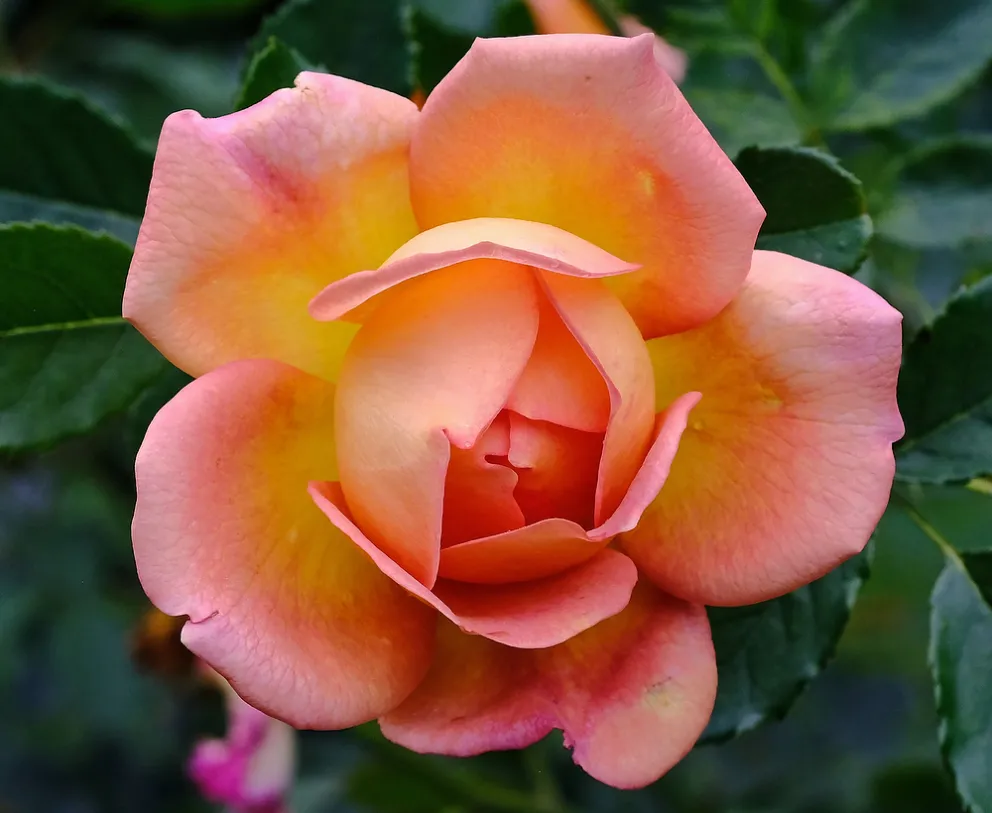
Used my Nikon 105mm manual lens with an adapter on my Fuji XT-2 to make this picture of a rose beginning to bloom at the St. Louis Botanical Garden.
The SILENT SHUTTER: Not just quiet. But silent. At first it took a while getting used to it. Did I make a picture or not, did the shutter release? But once I got the knack of it I was sold. I use it the majority of the time now. It's amazing how well it works relaxing people during a photo session. Though I did have one faculty member ask me to turn the shutter noise back on. It seemed she needed to hear the click, it was her pacifier. To each his own.
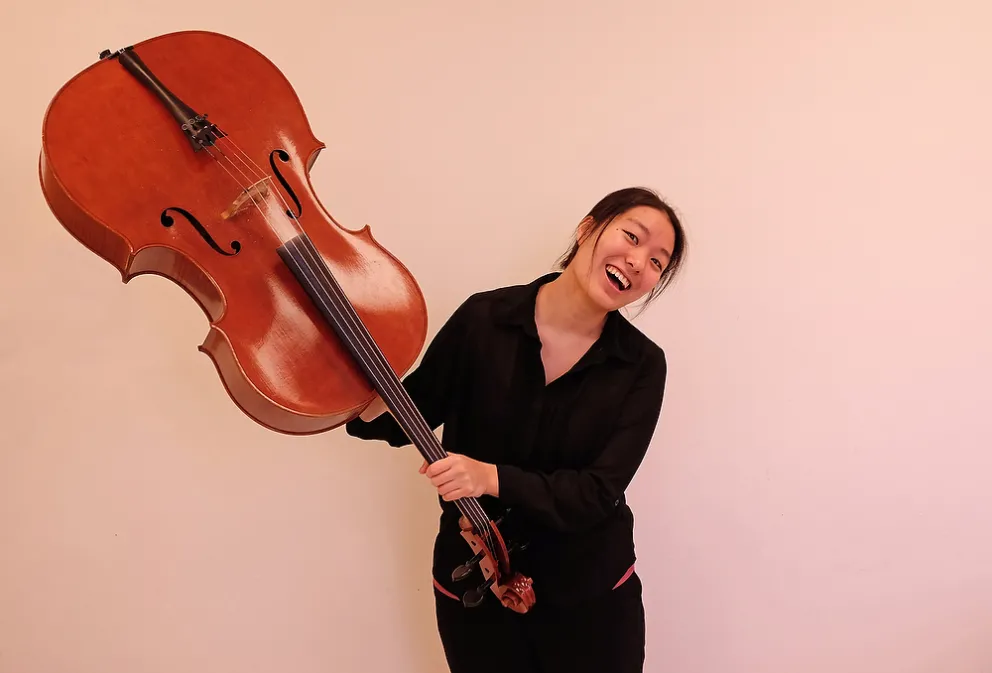
UMSL student and award-winning cellist Joanne Lee lets loose during a portrait shoot. XT-1 and 23mm lens.
QUALITY GLASS: (At affordable prices). And the ability to adapt other lenses to Fuji cameras, like some of my Nikon glass, is a big, big plus.
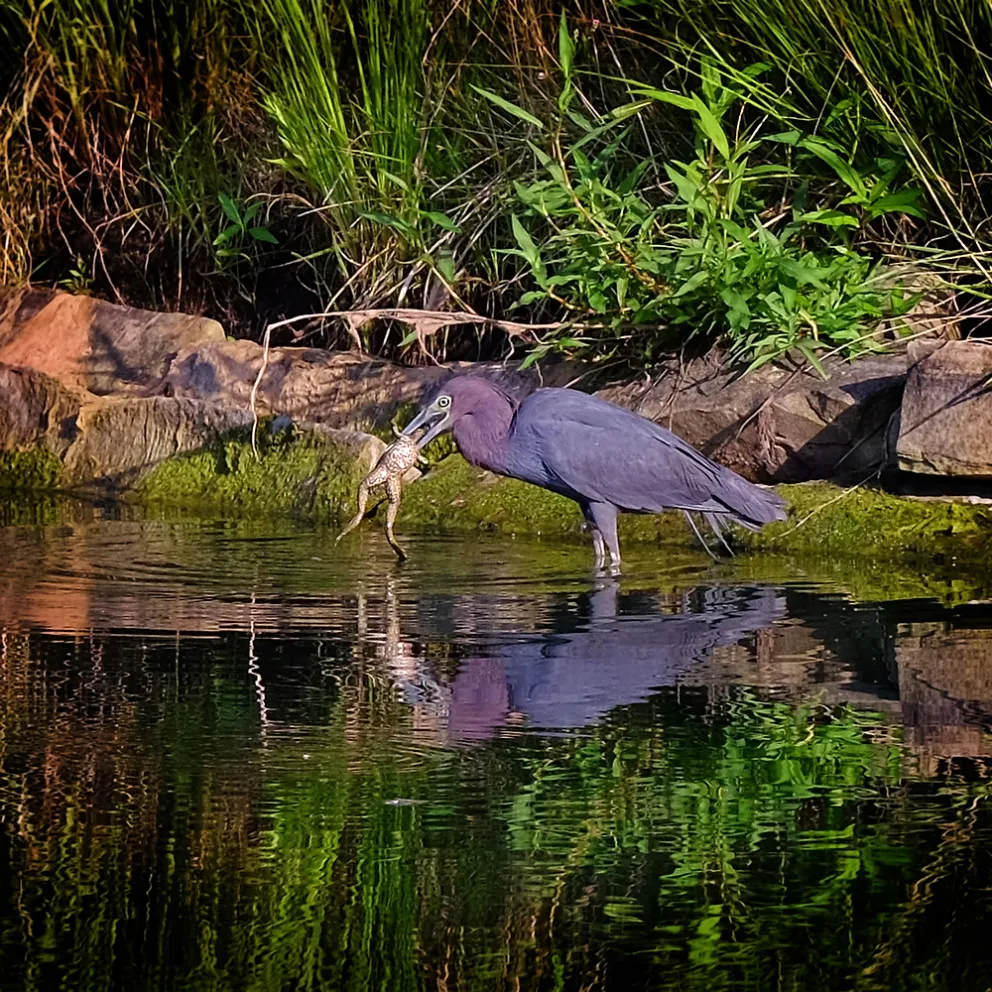
A blue heron found lunch in the MSC pond. XT-1 and 50-140mm zoom lens.
FIRMWARE UPGRADES: Overall, this is where Fuji truly won me over. Fuji sends out firmware upgrades on a (somewhat) regular basis that improve many functions of various levels of cameras--without needing to. Meaning, there were no problems or issues with a camera that photographers were demanding to be fixed. Instead, when Fuji releases a new camera with upgraded technology, they choose to send out firmware upgrades to improve previous, lower level cameras. FOR FREE!
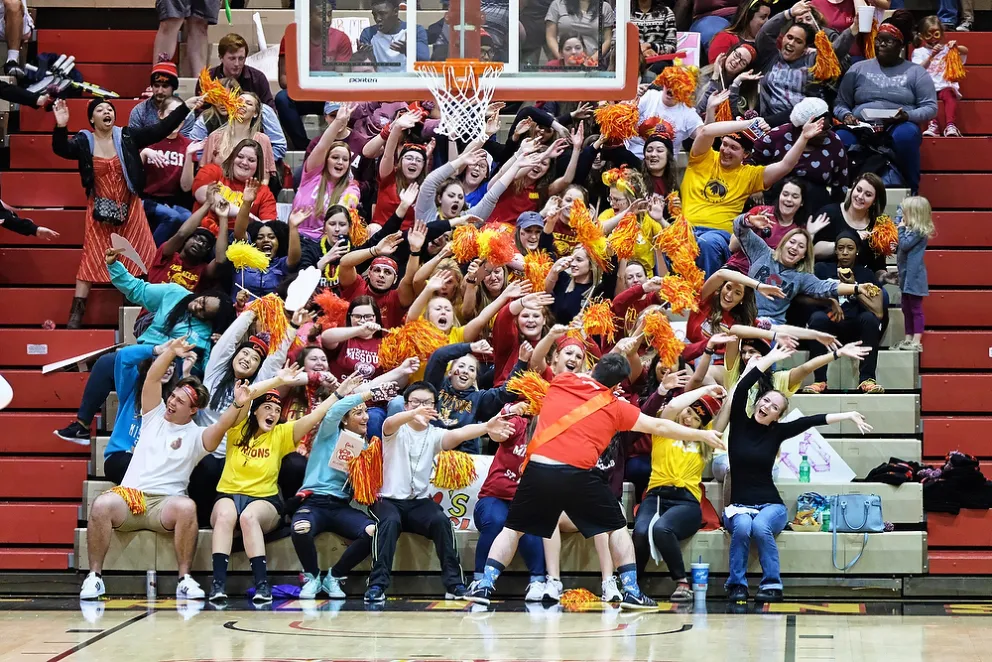
Homecoming king rallies the crowd at "Pack the Stands" night. ISO 4000 on the XT-2.
FILM SIMULATIONS: FujiFilm was able to incorporate their vast knowledge of film and its color and black & white profiles into digital simulations that are quite lovely. When I shot Canon and Nikon I would edit from RAW images 100% of the time. Now with Fuji film simulations I edit from SOOC jpegs 80-90% of the time. I shoot RAW and JPEG, but rarely need the former. It's a huge time savings in the editing process.
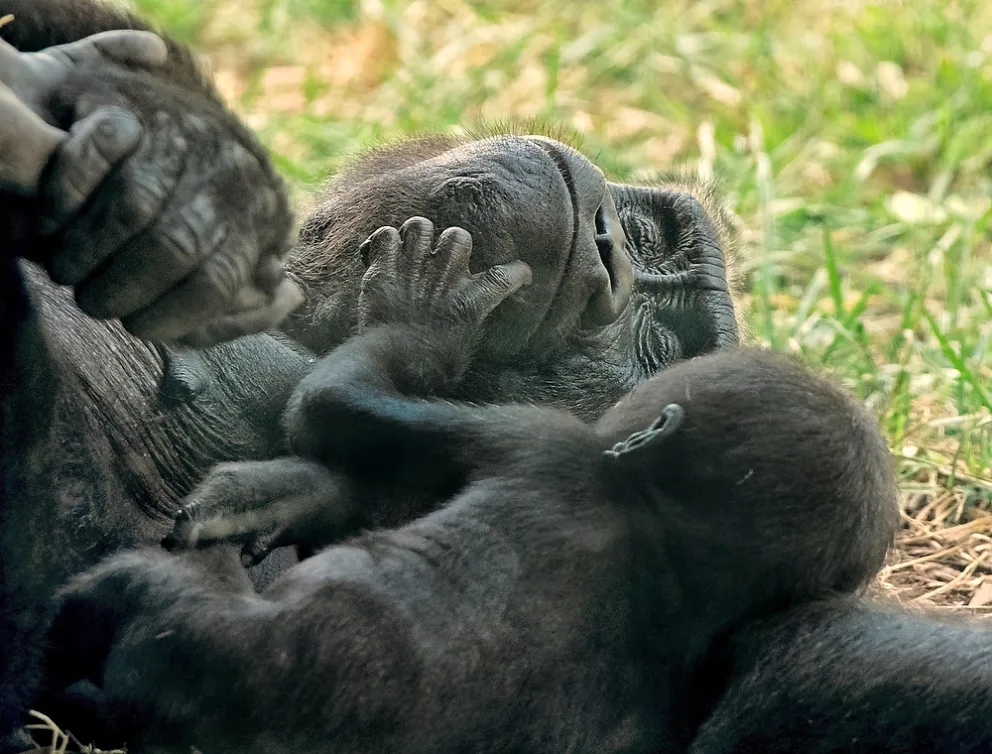
A baby gorilla and its mother at Sedgwick Zoo in Wichita, Kansas. XT-2 and 50-140mm zoom.
SMALL, LIGHTER, LESS EXPENSIVE EQUIPMENT: My neck thanks me. My back thanks me. And my pocketbook thanks me. One interesting note along these lines is that I like the feel of a larger camera in my hands so with the release of the Fuji XH-1 earlier this year with the bigger grip I'm quite pleased because now I can have both, the larger and the smaller in the mirrorless world.
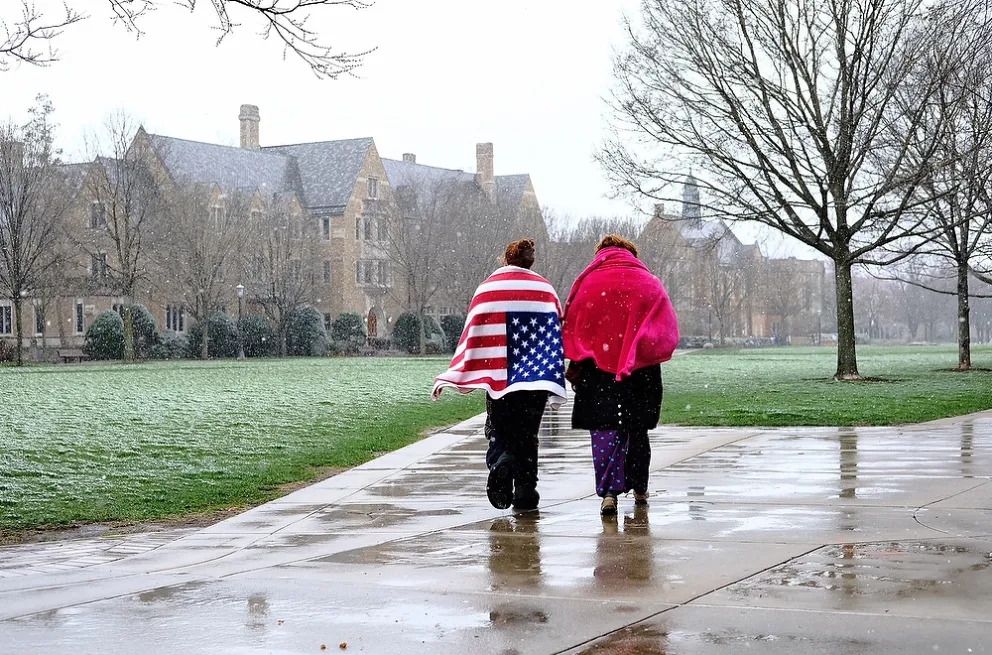
Visiting my Alma Mater during a spring snow shower.
CROPPED SENSOR vs FULL FRAME: It never became an issue for me. And it would be accurate to say in my DSLR days I was a full-frame snob. Now that the medium format world of the Fuji GFX-50R is only weeks away whatever limitations that might have been are no longer a concern.
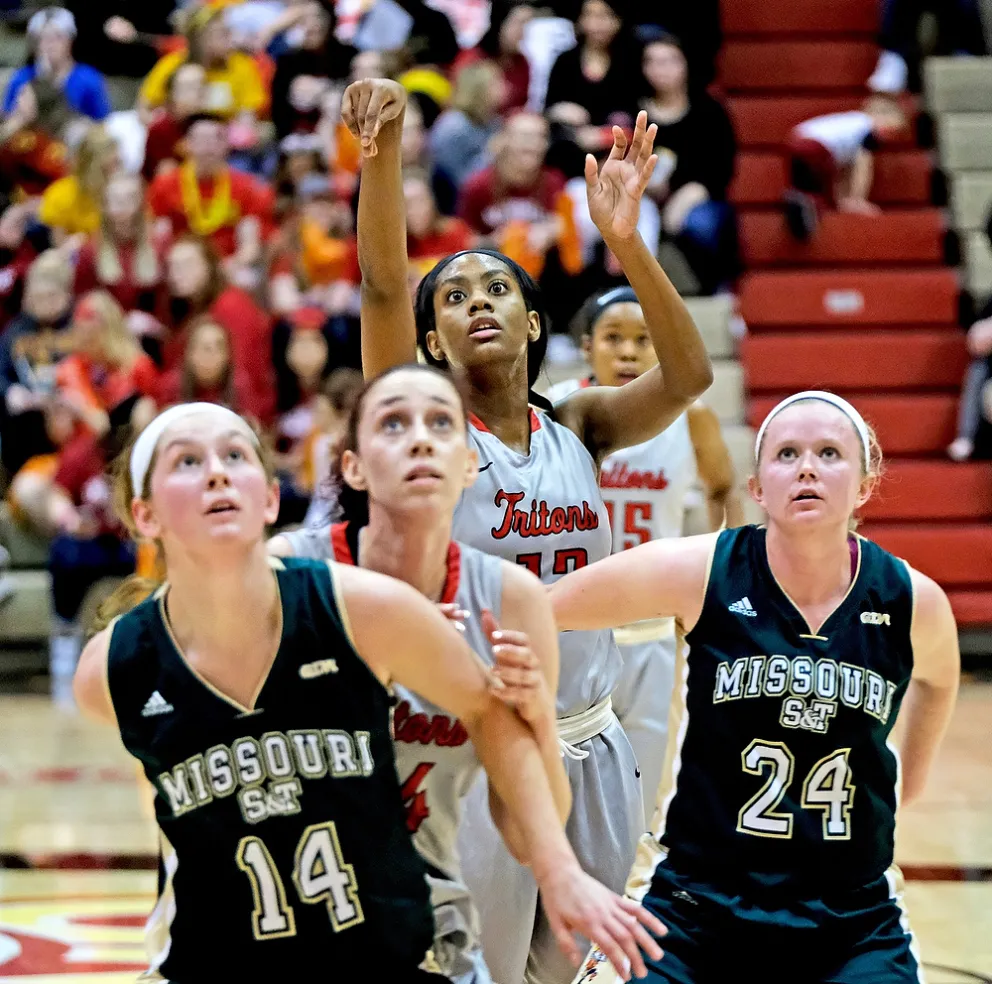
The free throw is good! XT-2 at 4000ISO.
Bottom line: Fuji cameras and lenses help me make fine photographs.
One Final Note: Action/sports assignments make up less than 10% of my workload. Would I still go totally mirrorless if it was a much larger chunk of my work? Probably not, though last year I never picked up the Canon 7D II, which was my go-to sports camera. Instead, I shot "Pack the Stands" and UMSL Night at the Blues (hockey) all with the XT-2 and was quite happy with my pictures. Pleasantly surprised is more like it. And with the release of the Fuji XT-3 and its improved continuous focus capabilities I realized my DSLR days were finally over.
And I'm loving it!
__________________________________________________________________________________
“Why did they let the turkey join the band? Because he had the drumsticks!” Feedback? Story ideas? Joke submissions? Email editor Matt Cashore at mcashore@nd.edu.